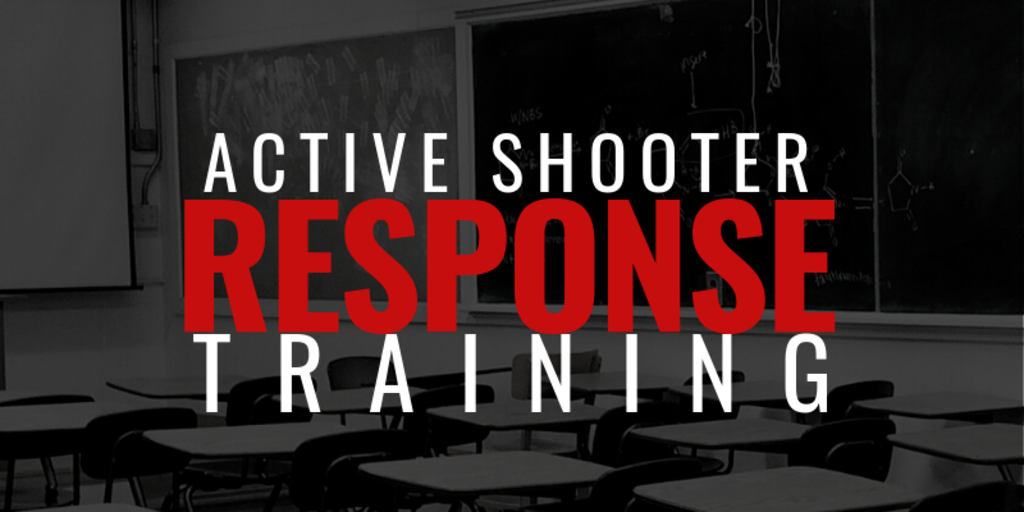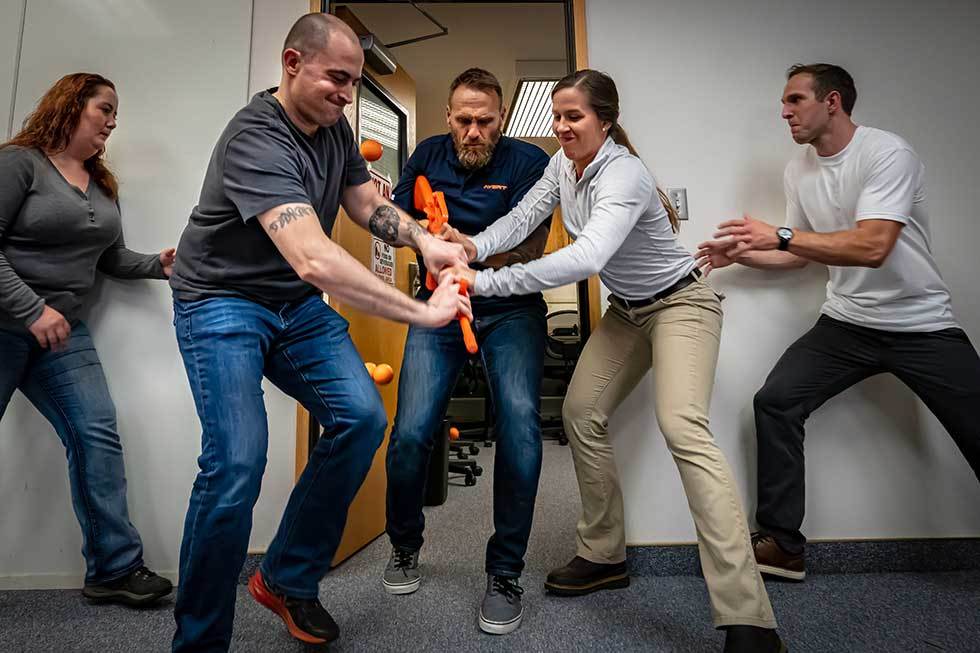The Benefits of Recurring Active Shooter Training for Community Defense
Wiki Article
Executing Active Shooter Training: Finest Practices for Creating a Safe and Prepared Community Environment
As communities confront the unsettling fact of energetic shooter cases, the implementation of detailed training programs comes to be imperative. An effective strategy rests on not only the growth of tailored curricula that resolve neighborhood threats but additionally the participation of diverse stakeholders. By employing a selection of training methods, communities can ensure that all participants are equipped with important skills. Nevertheless, the challenge depends on preserving an adaptive structure that evolves with emerging dangers. What are the vital aspects that can transform a conventional training program into a durable version for area strength?
Comprehending the Requirement for Training
In an era marked by boosting occurrences of physical violence in public rooms, recognizing the demand for energetic shooter training has never been much more essential. Thorough training initiatives can equip participants with the knowledge and abilities to react emphatically.Training promotes a feeling of empowerment and readiness, enabling people to really feel more safe in their surroundings. The benefits of active shooter training extend beyond immediate feedback; they include enhancing interaction protocols and enhancing overall safety and security actions within companies.
Key Elements of Effective Programs
Effective active shooter training programs include a number of essential elements that improve preparedness and action capabilities. Initially, detailed educational program advancement is vital, making sure that training web content matters, evidence-based, and customized to the specific requirements of the organization or community. This includes recognizing the characteristics of energetic shooter cases and the psychological effect on individuals entailed.2nd, practical training circumstances ought to be utilized to imitate potential circumstances, allowing participants to exercise decision-making and response strategies in a regulated environment. These drills promote muscle mass memory and build self-confidence amongst participants.
Third, an emphasis on communication protocols is critical. Establishing clear lines of communication amongst police, emergency situation responders, and individuals guarantees coordinated responses throughout a case. Regular updates and refresher course courses aid keep communication pathways clear and efficient.
Fourth, recurring assessment and comments mechanisms need to be incorporated into the training program - active shooter training. Analyzing the efficiency of training with individual feedback and efficiency metrics permits continuous improvement
Finally, cultivating a society of security and readiness within the area encourages watchfulness and aggressive steps, making certain that people are not only experienced yet also participated in maintaining a safe atmosphere.
Engaging Neighborhood Stakeholders

To properly engage these stakeholders, it is necessary to communicate the purposes and advantages of the training. Holding informative sessions can aid clear up the training's function, address worries, and describe the duties each stakeholder may play. pop over to these guys Furthermore, creating a stakeholder advising committee can help with continuous discussion, enabling diverse perspectives and understandings to be incorporated into the training program.
Structure relationships with neighborhood leaders and companies is likewise important. Their assistance can enhance outreach efforts, increase involvement, and ensure that training is tailored to the special needs of the community. Additionally, stakeholders can assist in disseminating information and sources, reinforcing the message of security and readiness.
Inevitably, engaging neighborhood stakeholders not just enhances the training campaign however additionally grows a feeling of ownership among citizens, leading to a much more resilient and enlightened neighborhood capable of responding successfully to prospective threats.
Educating Delivery Techniques
Making use check that of a range of training delivery methods is necessary to accommodate the diverse understanding designs and needs of individuals in energetic shooter training programs (active shooter training). Efficient training can take a number of kinds, including lectures, hands-on simulations, on-line components, and interactive workshops. Each technique serves an unique objective and can boost the total understanding experience
Online modules offer adaptability and availability, making it possible for individuals to discover at their very own speed. These can consist of video clips, quizzes, and conversations to determine understanding. Interactive workshops motivate team conversations and analytic, advertising synergy and communication abilities.
why not try here Integrating a blended method that incorporates these techniques not only improves the training experience but additionally ensures that participants are much better prepared to respond successfully in the event of an energetic shooter circumstance (active shooter training). By addressing different learning preferences, organizations can develop a more enlightened and receptive area
Constant Analysis and Renovation
Routine evaluation and enhancement of energetic shooter training programs are essential to keeping their significance and performance. As hazards evolve, so have to the strategies and methodologies utilized in training. Constant analysis ensures that training material mirrors the most up to date knowledge on energetic shooter events, integrating lessons picked up from current occasions and changing for emerging trends.To facilitate this process, companies should establish comments systems that include participant evaluations, expert testimonials, and occurrence debriefs. Gathering data on individual efficiency during drills and exercises is essential, as it highlights locations requiring renovation and notifies future training sessions. Furthermore, engaging with law enforcement and emergency situation responders can supply beneficial understandings into the functionality and applicability of training procedures.
Frequently scheduled evaluations of training materials and techniques should be mandated, fostering a setting of innovation and versatility. Organizations should likewise motivate a society of recurring understanding, where staff participants feel equipped to suggest modifications based upon their experiences. By dedicating to continual evaluation and renovation, companies not just enhance the efficiency of their active shooter training programs yet likewise enhance their general commitment to security and readiness within the neighborhood.
Final Thought
In verdict, reliable application of active shooter training requires an extensive technique that prioritizes area engagement and reasonable simulations. Inevitably, a commitment to continuous training and renovation grows a society of caution and preparedness, ensuring a safer setting for all community members.Report this wiki page